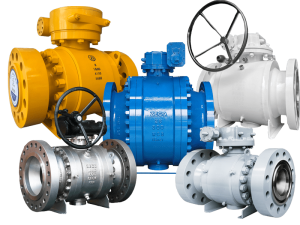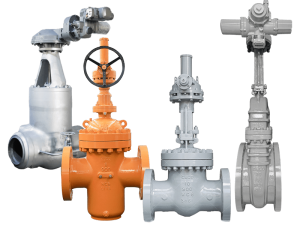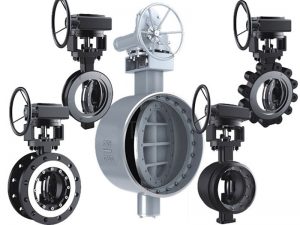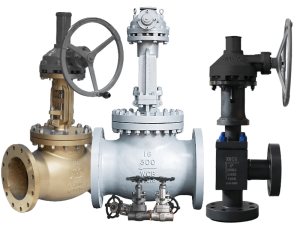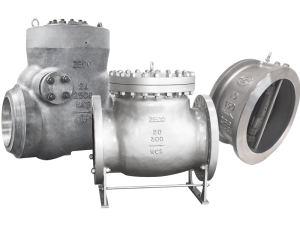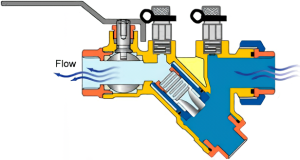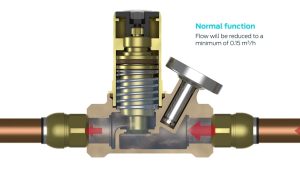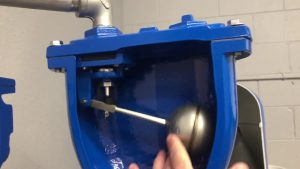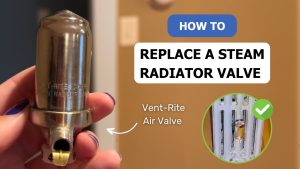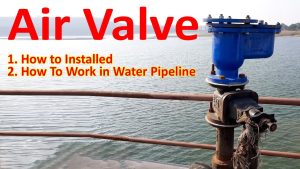Já se perguntou porque é que os seus canos de água fazem aquele som irritante de martelar? Ou porque é que a sua bomba decide de repente fazer horas extraordinárias, gastando energia como um louco?
A questão é a seguinte:
Provavelmente é ar preso no seu sistema. E é exatamente aí que entram as válvulas de ar.
Neste guia, vou mostrar-lhe como um válvula de ar funciona, os diferentes tipos que deve conhecer e como escolher o mais adequado para o seu sistema.
Vamos mergulhar de cabeça.
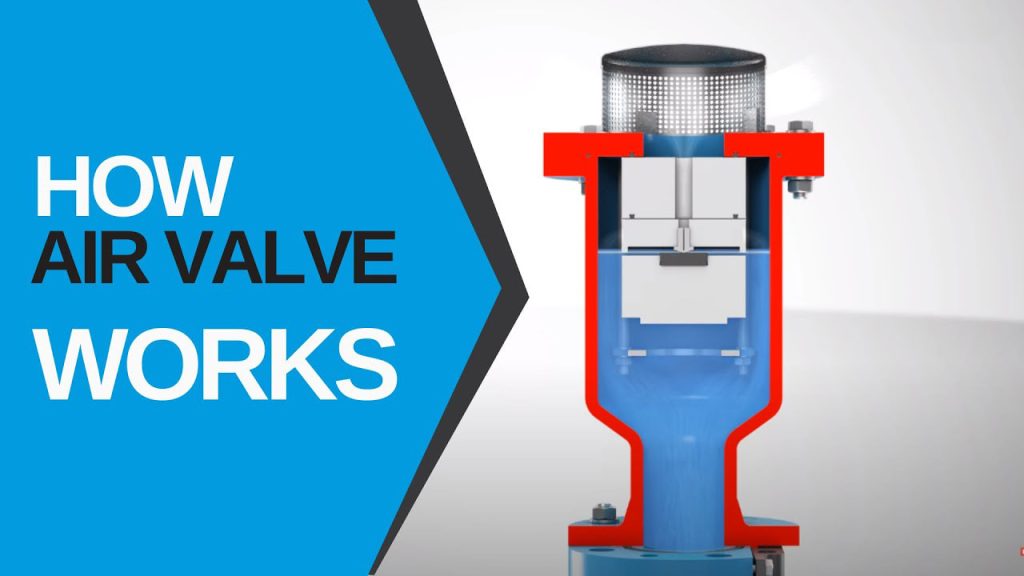
Índice
- O que causa ar nas tubulações de água?
- Porque é que o ar nos canos é um grande problema
- Como é que uma válvula de ar funciona?
- Os três principais tipos de válvulas de ar
- O mecanismo de flutuação: Onde a magia acontece
- Onde instalar as válvulas de ar (isto é fundamental)
- Aplicações no mundo real
- Problemas e soluções comuns
- Dimensionamento de válvulas de ar (não adivinhe)
- Dicas de manutenção que realmente funcionam
- O futuro da tecnologia de válvulas de ar
- Principais conclusões
O que causa ar nas tubulações de água?
Antes de entrarmos nos pormenores do válvula de ar mecânica, vamos falar sobre a razão pela qual precisa destas coisas em primeiro lugar.
O ar entra nos seus canos de três formas principais:
Condutas vazias: Quando se instala uma conduta pela primeira vez, ela não está tecnicamente vazia. Está cheia de ar. E quando se começa a bombear água através dela, esse ar tem de ir para algum lado.
Ar dissolvido na água: Eis algo que a maioria das pessoas não sabe: a água contém cerca de 2% de ar por volume. À medida que a água flui através do seu sistema, este ar separa-se e acumula-se nos pontos altos.
Equipamento mecânico: As bombas, válvulas e juntas de tubagem podem introduzir ar no seu sistema. Especialmente se os vedantes não forem perfeitos (e sejamos honestos, raramente o são).
E é aqui que as coisas ficam interessantes:
Este ar retido não fica ali parado em silêncio. Ele causa todo o tipo de problemas.
Porque é que o ar nos canos é um grande problema
Já vi sistemas em que o ar preso era a causa:
- Caudais reduzidos (até 30% em alguns casos)
- Martelo hidráulico que literalmente abanou edifícios inteiros
- Tubos corroídos da exposição ao oxigénio
- Leituras incorrectas dos contadores milhares de euros de sobrecustos
- Avarias nas bombas de trabalhar contra bolsas de ar
De facto, um estudo concluiu que a remoção do ar retido pode reduzir os custos de bombagem até 20%.
Isso é dinheiro a sério.
Como é que uma válvula de ar funciona?
Agora o evento principal.
As válvulas de ar funcionam segundo um princípio surpreendentemente simples: flutuabilidade.
O mecanismo básico é o seguinte:
- Quando a água entra na válvula, empurra um flutuador para cima
- A boia veda uma abertura na parte superior da válvula
- Quando o ar se acumula, desloca a água
- O flutuador cai, abrindo a válvula
- Fugas de ar, a água volta a entrar e o ciclo repete-se
Pense nisto como uma válvula de boia da sanita, mas ao contrário.
Muito inteligente, não é?
Mas é aqui que a coisa fica mais sofisticada...
Os três principais tipos de válvulas de ar
Nem todas as válvulas de ar são criadas da mesma forma. Cada tipo serve um objetivo específico:
1. Válvulas de libertação de ar
Estes são os seus cavalos de batalha para o funcionamento normal.
O que fazem: Libertação contínua de pequenas bolsas de ar durante o funcionamento normal do sistema
Tamanho do orifício: Pequena (normalmente 1/16″ a 1/2″)
Melhor para: Eliminação do ar dissolvido que sai da solução
Gosto de pensar neles como a "equipa de manutenção" das válvulas de ar. Estão sempre a trabalhar silenciosamente em segundo plano.
2. Válvulas de ar/vácuo
Estes são os que mais pesam.
O que fazem:
- Ventilar grandes volumes de ar durante o enchimento dos tubos
- Admitir ar durante a drenagem para evitar o colapso do vácuo
Tamanho do orifício: Grande (1″ a 20″ ou mais)
Melhor para: Arranque, paragem e prevenção do colapso da tubagem
Estas válvulas podem movimentar grandes volumes de ar. Estamos a falar de centenas de pés cúbicos por minuto em alguns casos.
3. Válvulas de ar combinadas
Quer o melhor dos dois mundos? É isso que as válvulas combinadas oferecem.
O que fazem: Tudo. Combinam as funções de pequeno e grande orifício
Melhor para: A maioria das aplicações em que se pretende uma gestão completa do ar
Na minha experiência, as válvulas combinadas são frequentemente a escolha mais inteligente. Obtém-se uma proteção abrangente com apenas uma válvula.
O mecanismo de flutuação: Onde a magia acontece
Vamos ser um pouco mais técnicos.
O flutuador dentro de um válvula de ar não é uma boia qualquer. Foi concebida com precisão para:
- Subida com flutuabilidade específica quando rodeado de água
- Largar no momento exato quando o ar está presente
- Vedar perfeitamente sob pressão (por vezes até 300 psi)
Os carros alegóricos modernos são feitos de materiais como:
- Aço inoxidável (para maior durabilidade)
- Polipropileno (para resistência química)
- Compósitos especiais (para aplicações específicas)
E aqui vai uma dica de profissional:
A forma da boia é importante. Os flutuadores esféricos funcionam muito bem para água limpa. Mas para águas residuais? É necessário um flutuador alongado que não fique sujo com detritos.
Onde instalar as válvulas de ar (isto é fundamental)
Localização, localização, localização.
Pode ter o melhor do mundo válvula de armas se estiver no sítio errado? Inútil.
É aqui que precisa deles:
Pontos altos: O ar sobe naturalmente. Instale válvulas nos picos da sua conduta.
Depois das bombas: As bombas podem introduzir ar através da cavitação. Apanhe-a cedo.
Tubagens longas: Instalar válvulas de libertação de ar a cada 800-1000 metros em troços longos.
Medidores de caudal antes e depois: As bolhas de ar prejudicam a precisão. Proteja as suas medições.
Alterações no diâmetro da tubagem: As mudanças de velocidade podem libertar o ar dissolvido.
Um erro que estou sempre a ver?
As pessoas instalam válvulas de ar em locais de difícil acesso. Grande erro. É preciso ser capaz de fazer a manutenção destas coisas.
Aplicações no mundo real
As válvulas de ar não são apenas para as condutas de água. Estão em todo o lado:
- Sistemas de irrigação (evitar a formação de bolhas de ar nos tubos de aspersão)
- Colectores de esgotos (utilizando válvulas de ar especiais para águas residuais)
- Sistemas de proteção contra incêndios (assegurando o fluxo total do tubo quando necessário)
- Processos industriais (desde sistemas de arrefecimento a instalações químicas)
- Sistemas HVAC (eliminação de ar dos circuitos hidrónicos)
Cada aplicação tem os seus próprios requisitos. Os sistemas de esgotos, por exemplo, necessitam de válvulas com caraterísticas anti-entupimento e materiais resistentes à corrosão.
Problemas e soluções comuns
Até as melhores válvulas de ar podem ter problemas. Eis o que deve ser observado:
Problema: Válvula com fuga de água
Solução: Normalmente é um vedante gasto. Substituir o O-ring ou a sede
Problema: A válvula não liberta o ar
Solução: Verificar se existem detritos a bloquear o orifício. Limpar ou substituir
Problema: Descarga de ar constante
Solução: Poderá haver um problema grave de entrada de ar noutro ponto do sistema
Problema: Válvula a tremer ou a vibrar
Solução: Frequentemente causado por dimensionamento incorreto. Recalcular e potencialmente redimensionar
Dimensionamento de válvulas de ar (não adivinhe)
É aqui que muitas pessoas fazem asneira.
Dimensionamento de um válvula de ar não se trata de escolher um que corresponda ao tamanho do seu tubo. Trata-se de calcular:
- Volume de ar durante o enchimento/drenagem
- Pressão de funcionamento
- Caudais de ar necessários
Uma tubagem de 6 polegadas pode necessitar de uma tubagem de 2 polegadas válvula de ar. Ou pode precisar de uma válvula de 4 polegadas. Depende da aplicação específica.
Utilize as tabelas de tamanhos do fabricante. Não adivinhe.
Dicas de manutenção que realmente funcionam
Quer que as suas válvulas de ar durem? Eis o que realmente importa:
- Inspeção anual: Verificar se corrosãodesgaste e funcionamento correto
- Exercitar a válvula: Atuar manualmente para evitar que fique colado
- Limpar o orifício: Mesmo pequenos detritos podem causar problemas
- Verificar o flutuador: Verificar se se move livremente
- Substituir os vedantes de forma pró-ativa: Não esperar por fugas de informação
Já vi válvulas de ar com manutenção correta durarem mais de 20 anos. As negligenciadas? Talvez 5 anos.
O futuro da tecnologia de válvulas de ar
Válvula de ar A tecnologia não está parada. Eis o que está para vir:
- Válvulas inteligentes com sensores IoT para monitorização remota
- Modelos de auto-limpeza para aplicações exigentes
- Materiais avançados para condições extremas
- Alívio de ar/vácuo/pressão integrado combinações
A indústria está a avançar para a manutenção preditiva e a monitorização em tempo real. Coisas muito interessantes.
Principais conclusões
Vamos lá acabar com isto.
Compreensão como válvula de ar obras resume-se a três princípios fundamentais:
- A flutuabilidade acciona o mecanismo - é a física simples a trabalhar para si
- Diferentes tipos servem diferentes objectivos - escolha com base nas suas necessidades
- A instalação e manutenção corretas são cruciais - a localização e os cuidados são importantes
As válvulas de ar podem não ser a parte mais glamorosa de um sistema de tubagem. Mas são absolutamente essenciais para a eficiência, segurança e longevidade.
Se os fizer corretamente, o seu sistema funcionará sem problemas durante anos.
Enganou-se? Bem, é nessa altura que se começam a ouvir aqueles sons de marteladas caras.
O resultado final é o seguinte: as válvulas de ar são um pequeno investimento que evita grandes problemas. E agora que sabe como válvula de ar obrasO sistema de gestão de resíduos é um sistema de gestão de resíduos que permite tomar decisões inteligentes sobre o seu sistema.

